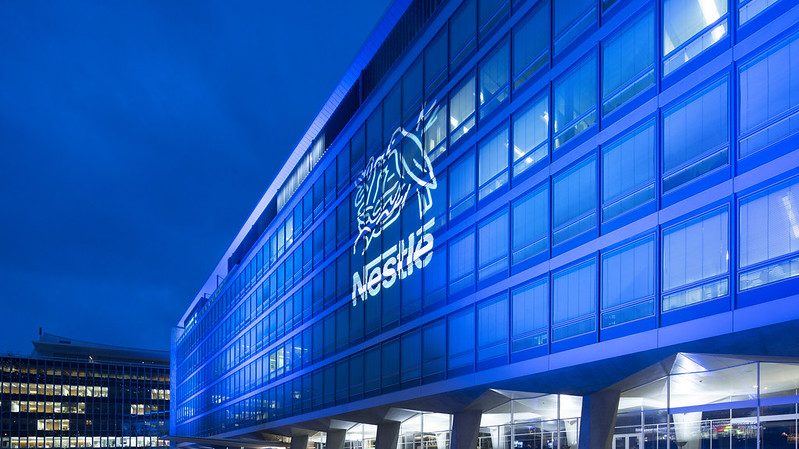In the world of chocolate, the journey from cocoa farms in West Africa to supermarket shelves has been tainted by controversy. Nestlé, one of the largest food and beverage companies globally, has long stood at the center of this debate. Their claim to champion sustainability through their Nestlé Cocoa Plan is both ambitious and, some argue, carefully crafted to preserve their public image. As Nestlé touts its commitment to sourcing 100% of its cocoa sustainably by 2025, a deeper look into its practices and history raises the question: Are these efforts genuine steps toward change, or mere corporate greenwashing?

Nestlé proudly declares that 85.5% of its cocoa was sourced through the Nestlé Cocoa Plan (NCP) in 2023, a significant milestone on their path to 100% sustainable sourcing by 2025. The plan, which collaborates with Rainforest Alliance certification, is designed to tackle deep-rooted social and environmental issues in the cocoa supply chain. According to Nestlé, the NCP’s framework emphasizes better livelihoods for farmers, enhanced environmental practices, and the eradication of child labor.
Yet, beneath these promises lies a more complicated narrative. Critics argue that the NCP serves as a buffer, allowing Nestlé to present itself as proactive in the face of media scrutiny. The company’s sustainability reports and announcements showcase a well-crafted image of progress, but industry insiders question how deep this commitment truly runs. “The companies have always done just enough so that if there were any media attention, they could say, ‘Hey guys, this is what we’re doing,’ ” said Antonie Fountain, managing director of the Voice Network, an organization advocating for ethical cocoa production.
A Troubled History with Child Labor
Nestlé’s involvement in tackling child labor stretches back to the early 2000s with the signing of the Harkin-Engel Protocol. Ratified in September 2001, this protocol was designed to eliminate the worst forms of child labor in the cocoa industry by 2005. While this goal seems noble, the reality has been marked by delays and setbacks. The protocol’s deadlines were continually pushed back, and the industry, including Nestlé, was accused of stalling real progress.
By 2005, the situation remained dire, with little change in the cocoa supply chain. In fact, shortly after the protocol’s initial deadline, Nestlé and other chocolate giants, including Cargill and Archer Daniels Midland, were taken to court by the International Labor Rights Fund (ILRF) for alleged involvement in forced child labor, child trafficking, and other human rights abuses in West Africa’s cocoa farms.
Research conducted by the National Opinion Research Center at the University of Chicago revealed that in 2018-2019, 1.56 million children were still working in cocoa production in regions like the Ivory Coast and Ghana. A staggering 95% of these children were involved in hazardous activities, including the use of dangerous tools and agrochemicals, and the carrying of heavy loads. While Nestlé has implemented measures such as the Child Labor Monitoring and Remediation System (CLMRS) and partnered with the Fair Labor Association, progress has been slow, leaving many wondering why a company of Nestlé’s size and influence hasn’t achieved more substantial results.
Delays, Excuses, and Corporate Interests
For many, the delayed progress on eliminating child labor boils down to a stark reality: the cocoa industry prioritizes profit over people. Natacha Thys of the ILRF captured this sentiment in a 2006 statement, saying, “What’s holding back progress on illegal child labour is nothing more than the industry’s unwillingness to support real solutions and exchange a small portion of its massive profits to ensure a sufficient return for farmers and workers.”
Nestlé’s 2017 “Tackling Child Labour Report” further highlights the discrepancy between the company’s narrative and the complex reality on the ground. The report acknowledges poverty, lack of education, and infrastructural issues as root causes of child labor but makes little mention of how the industry’s own practices, including minimal wages for farmers, exacerbate these problems. While the report portrays initiatives like the CLMRS as groundbreaking, critics argue that these efforts were long overdue and insufficient in the face of the promises made under the Harkin-Engel Protocol nearly two decades earlier.
The Thin Veil of Sustainability
In addition to its struggles with human rights, Nestlé has also faced criticism for its environmental practices. Despite its claims of working toward sustainability, the company was labeled one of the top environmental offenders by the Break Free from Plastic initiative, ranking as the second-largest producer of plastic waste in 2024. Furthermore, Nestlé’s water extraction practices, particularly in drought-prone regions, have drawn ire from environmental groups who accuse the company of intensifying water shortages to fuel its massive bottled water business.
This dichotomy—of sustainability claims versus questionable practices—highlights the challenges in holding multinational corporations accountable. The term “sustainable” is not legally defined, allowing companies to use it liberally, often without substantial backing. Nestlé’s efforts, while laudable on paper, seem to fit this pattern. Their Cocoa Plan, with its promises of ethical sourcing and child labor eradication, feels more like a PR strategy than a transformative initiative, particularly when weighed against the historical and ongoing exploitation in cocoa farming.
What’s Next for Nestlé and the Industry?
As the 2025 deadline for eliminating the worst forms of child labor looms, the world is watching to see whether Nestlé can meet its commitments or if it will continue a pattern of delays and deflection. The cocoa industry needs more than just certifications and monitoring systems—it requires a systemic overhaul where companies pay farmers fair wages and prioritize human rights over profit margins.
Nestlé’s journey highlights a broader issue within corporate sustainability initiatives: how do we distinguish between genuine progress and marketing strategies? While Nestlé’s sustainability efforts might create a more responsible image for the company, the cocoa farmers and children working in hazardous conditions in West Africa have yet to see transformative change.
The next few years will be crucial for Nestlé. If the company can follow through on its promises and genuinely contribute to a fairer, more sustainable cocoa industry, it could mark a turning point in corporate responsibility. If not, Nestlé may find itself increasingly criticized for putting profits before ethics, and its efforts branded as yet another example of corporate greenwashing.
Curation & Research by: Julia Guilleaume | Drafted by: Jakob Russell (& AI) | Edited by: Vedant Bhrambhatt



